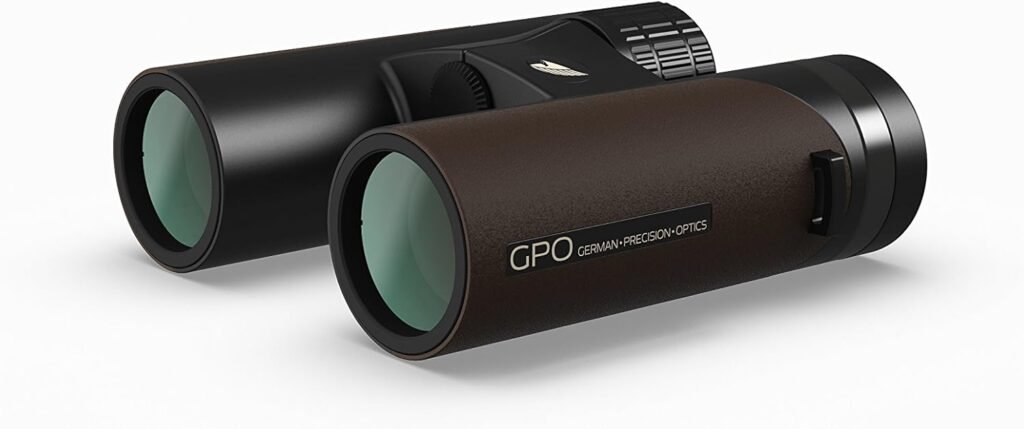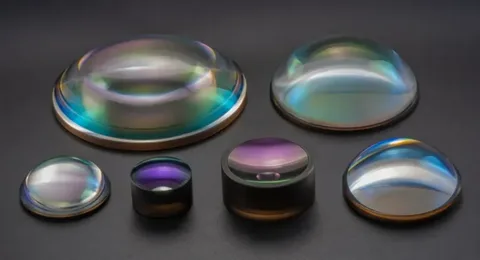Precision optics is at the heart of modern technological advancements, driving innovation across numerous industries. These meticulously crafted optical components, such as lenses, mirrors, and prisms, are designed to manipulate light with extreme accuracy. Whether it’s in healthcare, aerospace, or consumer electronics, precision optics plays a crucial role in enhancing the performance and functionality of cutting-edge technologies.
The Importance of Precision Optics in Today’s World
Precision optics has become indispensable in our increasingly technology-driven world. As industries continue to push the boundaries of what’s possible, the demand for high-quality optical components has surged. Precision optics ensures that light is controlled and directed with unparalleled accuracy, making it possible to achieve exceptional results in various applications.
One of the key areas where precision optics is making a significant impact is in medical imaging and diagnostics. In healthcare, clear and accurate imaging is essential for diagnosing and treating patients. Precision allows for the creation of high-resolution images, enabling medical professionals to detect even the smallest anomalies. This level of detail is critical for early diagnosis and successful treatment, making precision a vital component of modern healthcare.
In the aerospace and defense sectors, precision is equally important. Whether it’s for satellite imaging, navigation systems, or advanced weaponry, the need for precise optical components is paramount. These industries require optics that can withstand extreme conditions while maintaining their accuracy, which is why precision optics is a key focus area for research and development.
The consumer electronics industry also heavily relies on precision . From the cameras in our smartphones to the lenses in our VR headsets, precision optics enhances the user experience by delivering sharper images and more immersive visuals. As technology continues to evolve, the demand for better, more refined optics in consumer devices will only grow, further solidifying the importance of precision optics in our daily lives.
The growing demand for precision optics across these industries highlights its critical role in shaping the future of technology. As we continue to innovate and push the limits of what’s possible, precision will remain at the forefront, enabling the development of more advanced and reliable technologies. Whether it’s improving medical outcomes, enhancing national security, or creating more immersive experiences, precision is truly leading the way in modern technology.
Key Applications of Precision Optics

Precision optics is a cornerstone of modern technology, playing a vital role in various high-impact industries. Its ability to manipulate light with exceptional accuracy makes it indispensable in fields ranging from healthcare to consumer electronics. Let’s explore how precision is applied in some key sectors.
Medical Imaging and Healthcare
Precision optics is revolutionizing medical imaging and diagnostics, significantly improving the quality of patient care. In healthcare, the ability to capture clear, detailed images is essential for accurate diagnosis and treatment. Precision is integral to various imaging technologies, such as MRI machines, endoscopes, and optical coherence tomography (OCT) devices. These technologies rely on high-quality optical components to deliver sharp, accurate images that enable healthcare professionals to detect diseases at their earliest stages.
For instance, in ophthalmology, OCT devices use precision to create detailed cross-sectional images of the retina. This allows doctors to diagnose conditions like glaucoma and macular degeneration with greater accuracy and at an earlier stage, improving patient outcomes. Similarly, in surgical procedures, precision in endoscopes provides surgeons with high-resolution visuals, allowing for more precise and minimally invasive operations.
The role of precision optics in healthcare extends beyond imaging. It is also crucial in treatment technologies such as laser surgery, where the accuracy of optical components determines the success of delicate procedures. As medical technology continues to advance, precision optics will remain a critical element in delivering high-quality care.
Aerospace and Defense
In aerospace and defense, precision optics is essential for ensuring the accuracy and reliability of critical systems. Navigation and targeting systems, for example, depend on precision optics to function effectively in extreme environments. These systems require optical components that can withstand high levels of stress, temperature fluctuations, and other challenging conditions while maintaining precise performance.
Precision optics is used in various aerospace technologies, including satellite imaging, reconnaissance systems, and missile guidance. For example, advanced targeting systems in military aircraft use precision to accurately lock onto targets from great distances, ensuring successful missions. In satellite imaging, precision optics allows for the capture of high-resolution images of Earth’s surface, which are used for everything from weather forecasting to military intelligence.
The aerospace industry continually pushes the boundaries of what is possible, and precision optics is a key enabler of this progress. By providing the necessary accuracy and durability, precision enhances the performance of aerospace technology, making it more effective and reliable in critical situations.
Consumer Electronics
Precision optics has become a vital component in the consumer electronics industry, where the demand for high-quality visual experiences is ever-growing. From the cameras in smartphones to the lenses in VR headsets, precision significantly impacts the quality and functionality of these devices.
Smartphones, for instance, rely heavily on precision optics for their cameras. The tiny lenses in smartphone cameras are designed to capture clear, sharp images, even in challenging lighting conditions. As consumer expectations for camera quality rise, manufacturers increasingly invest in precision optics to enhance image clarity, color accuracy, and overall performance.
In the realm of virtual reality (VR) and augmented reality (AR), precision optics plays a crucial role in creating immersive experiences. High-quality lenses in VR headsets ensure that images are displayed with minimal distortion, providing users with a more realistic and engaging experience. Similarly, precision optics in AR devices enhances the accuracy of digital overlays, making them more responsive and seamless.
As consumer electronics continue to evolve, precision will remain a driving force behind innovations that enhance the user experience. Whether it’s capturing a perfect photo or diving into a virtual world, precision is key to delivering the visual quality that consumers expect.
Industrial and Manufacturing Applications

In industrial and manufacturing settings, precision optics is used to enhance efficiency, accuracy, and quality control. Automated systems, such as those used in robotics and machine vision, rely on precision to accurately measure, inspect, and process materials.
For example, in quality control, precision is used in systems that inspect products for defects. High-resolution cameras equipped with optics can detect even the smallest imperfections, ensuring that only products that meet strict quality standards make it to market. This not only improves product quality but also reduces waste and increases overall efficiency in manufacturing processes.
In addition, precision optics is used in laser cutting and engraving systems, where the accuracy of the optical components directly affects the precision of the cuts. By using high-quality optics, manufacturers can achieve cleaner, more precise cuts, which is especially important in industries like automotive and aerospace where precision is paramount. If you’re navigating the challenges of setting up a new manufacturing business, consider these Legal Tips for Startups to ensure you’re building on a solid foundation.
The integration of precision optics in industrial applications has led to significant advancements in manufacturing technology. As industries continue to seek greater efficiency and accuracy, the role of precision in these applications will only grow, driving further innovation and improvement in manufacturing processes.
Innovations in Precision Optics

Advancements in Optical Materials
Recent advancements in optical materials are making precision more durable and efficient. New materials, like specialized glass and advanced polymers, are helping optical components withstand harsh conditions while maintaining their performance. These materials also improve the efficiency of light transmission, making optics more effective in various applications. For example, fluoride glass is being used in high-end lenses to reduce distortion and enhance clarity, which is crucial for both industrial and consumer products.
Nanotechnology in Precision Optics
Nanotechnology is taking precision to the next level by allowing us to create optical components at a very small scale. These nanoscale components can manipulate light in ways that were previously impossible, leading to better performance and new applications.
For instance, nanostructured coatings on lenses can reduce reflections and improve image quality. Additionally, nanotechnology is helping to develop smaller, more powerful optical devices, which are essential in fields like medical imaging and communications.
Laser Technology and Precision Optics
Laser technology and precision optics work together to create highly accurate and powerful systems. Precision optics is crucial in guiding and focusing laser beams, making them more effective for applications like cutting, engraving, and medical treatments. As laser technology advances, it opens up new possibilities for even more precise and versatile applications. Trends such as the development of ultrafast lasers are showing great promise for the future, offering enhanced precision in areas like surgery and material processing.
Challenges and Future Trends in Precision Optics

Overcoming Manufacturing Challenges
- Common challenges in producing high-quality optical components:
- Achieving extreme precision and accuracy in production.
- Managing the high costs associated with specialized materials and processes.
- Addressing the difficulties in scaling up production while maintaining quality.
- Solutions and innovations aimed at overcoming these challenges:
- Adoption of advanced manufacturing techniques like 3D printing and automation.
- Development of cost-effective materials and processes.
- Implementation of stricter quality control measures to ensure consistent output.
Future Trends and Predictions
- Emerging trends that will shape the future of precision optics:
- Increased integration of AI and machine learning in optical design and manufacturing.
- Expansion of nanotechnology applications in creating more advanced optical components.
- Growth in demand for precision optics in rapidly developing fields like autonomous vehicles and quantum computing.
- Expert predictions on the evolution of precision optics in various fields:
- Continued miniaturization of optical devices, making them more powerful and versatile.
- Enhanced collaboration between industries to push the boundaries of what is possible in optics.
- Significant advancements in sustainability, with a focus on reducing the environmental impact of optical manufacturing processes.
Choosing the Right Precision Optics Supplier
Key Considerations
- Factors to consider when selecting a precision optics supplier:
- Quality of Products: Ensure the supplier provides high-quality, reliable optical components that meet your specifications.
- Technological Capabilities: Look for suppliers that use advanced manufacturing techniques and cutting-edge technologies.
- Reputation and Experience: Choose suppliers with a strong track record and experience in your specific industry.
- Customization Options: Assess the supplier’s ability to provide tailored solutions to meet your unique needs.
- Customer Support: Reliable customer service and technical support are crucial for addressing any issues that may arise.
- Cost and Value: Consider the balance between cost and the value offered, ensuring that you get the best return on your investment.
- Innovation: Suppliers that continually innovate and invest in research and development can offer more advanced and future-proof solutions.
- Importance of quality, reliability, and innovation:
- Quality: Ensures that the optical components perform consistently and meet industry standards.
- Reliability: Guarantees that the supplier can deliver products on time and meet production demands.
- Innovation: Keeps your business competitive by providing access to the latest technologies and advancements.
Top Suppliers in the Industry
- A brief overview of leading companies in precision:
- Company A: Known for its high-quality lenses and advanced manufacturing capabilities.
- Company B: Specializes in custom optical solutions with a strong focus on innovation.
- Company C: Offers a wide range of optical components with excellent customer support.
- Company D: Leading in nanotechnology integration and cutting-edge optical materials.
- What sets these suppliers apart in terms of technology and service:
- Company A: Advanced precision machining and rigorous quality control.
- Company B: Customization and flexibility in meeting unique client needs.
- Company C: Extensive product range and strong after-sales support.
- Company D: Pioneering in material science and nanotechnology.
| Supplier | Strengths | Key Offerings |
| Company A | Quality Control, Precision | High-quality lenses, rigorous testing |
| Company B | Innovation, Customization | Custom optical solutions, R&D focus |
| Company C | Customer Support, Range | Diverse product offerings, strong support |
| Company D | Advanced Technology, Materials | Nanotechnology, cutting-edge materials |
FAQs
H3: What are precision optics?
Precision optics are high-quality optical components designed to manipulate light with extreme accuracy, used in various advanced technologies.
Why are precision optics important in healthcare?
Precision optics are crucial in healthcare for accurate diagnostics and treatments, enabling technologies like medical imaging and laser surgery.
How do precision optics impact consumer electronics?
Precision optics improve the functionality and image quality in devices like smartphones and cameras, enhancing user experience.
What are the challenges in manufacturing precision optics?
Challenges include achieving high precision, managing costs, and ensuring consistent quality in mass production.
How can I choose the best precision optics supplier?
Consider factors like product quality, technological capabilities, reputation, and customer support when selecting a precision supplier.
Conclusion
Precision optics is a fundamental element driving advancements across a wide range of industries. Its importance cannot be overstated, as it enhances the performance of critical technologies in fields like healthcare, aerospace, consumer electronics, and manufacturing.
By providing clear, accurate, and reliable optical components, precision ensures that technologies function at their best, whether it’s through high-resolution medical imaging, precise aerospace navigation, or superior image quality in consumer devices. The ability of precision optics to adapt and meet the evolving needs of various sectors highlights its crucial role in modern technology.
As we look to the future, staying ahead with the latest innovations in precision optics will be essential for maintaining a competitive edge. Emerging technologies such as advanced optical materials, nanotechnology, and laser advancements are set to redefine the possibilities within this field.
By embracing these innovations, businesses and professionals can continue to push the boundaries of what is achievable, ensuring that they remain at the forefront of technological progress. The continuous evolution of precision optics promises to deliver even greater advancements, paving the way for new and exciting applications in the years to come.

